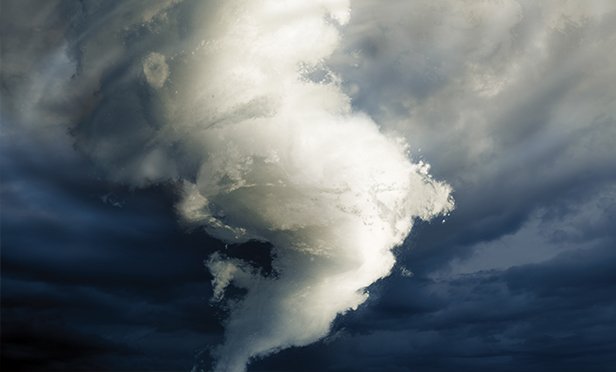Actuaries should use a sophisticated technical method for loss reserving to cope with factors such as a deluge of claims on one accident date, an expert advised at an industry conference.
Joseph A. Boor, an actuary for the Florida Office of Insurance Regulation, gave that counsel at the annual Casualty Loss Reserve Seminar co-sponsored by the Casualty Actuarial Society and American Academy of Actuaries.
According to Mr. Boor, the hurricane loss experience in Florida and along the Gulf Coast since 2004 distorts the accident year pattern and has presented actuaries with unique, but for the most part solvable, loss reserving challenges.
Mr. Boor, an expert on homeowners, property, and catastrophe reserving, noted that some of the companies that insure Florida homeowners had to increase their reserves during 2005 for 2004 claims.
To help insurance companies and their actuaries avert future reserve increases, Mr. Boor presented a technical method to more effectively assess reserve needs on hurricane claims.
Mr. Boor noted that among the reasons such a technical method is required is the large number of claims on one accident date which distort an accident year pattern.
He also mentioned that processing lags caused by high claims volume creates greater reserve needs and the potential for higher severities must be addressed.
Complex reinsurance programs, he advised must be understood and evaluated.
Mr. Boor noted that the response of actuaries in the area of hurricane loss reserving differs in whether they work for large companies with a long history, where data has been accumulated on prior storms, or small or newer companies where the available data may not be as robust or available at all.
The recent spate of hurricane activity, he said, can be used as a basis for future estimation of reserve costs for hurricanes.
Mr. Boor mentioned that one key to understanding hurricane reserve development is to realize that not all hurricanes are alike. “Hurricane Rita in 2005 was weak and resulted in small claims, while Hurricane Wilma, also a 2005 storm, was strong and generated more expensive claims,” he said.
Mr. Boor explained to the actuaries the operation of his state's unique Hurricane Catastrophe Fund, which covers 90 percent of losses in excess of a per-hurricane retention, with a maximum amount recoverable by each insurance company each year.
He said the fund also adds 5 percent of loss recovery for loss adjustment expenses.
Bill Burns, vice president and actuary of the Holborn Corp., made a presentation that addressed statistical/meteorological hurricane computer models in catastrophe reserving.
For the proper use of models, the presentation outlined the Actuarial Standard of Practice, Number 38 that was developed by the Task Force on Complex Models of the Casualty Committee of the Actuarial Standards Board and adopted in June 2000.
Under those standards of practice, the actuary should: determine appropriate reliance on experts; have a basic understanding of the model; evaluate whether the model is appropriate for the intended application; determine that appropriate validation has occurred; and determine the appropriate use of the model.
Want to continue reading?
Become a Free PropertyCasualty360 Digital Reader
Your access to unlimited PropertyCasualty360 content isn’t changing.
Once you are an ALM digital member, you’ll receive:
- Breaking insurance news and analysis, on-site and via our newsletters and custom alerts
- Weekly Insurance Speak podcast featuring exclusive interviews with industry leaders
- Educational webcasts, white papers, and ebooks from industry thought leaders
- Critical converage of the employee benefits and financial advisory markets on our other ALM sites, BenefitsPRO and ThinkAdvisor
Already have an account? Sign In Now
© 2024 ALM Global, LLC, All Rights Reserved. Request academic re-use from www.copyright.com. All other uses, submit a request to [email protected]. For more information visit Asset & Logo Licensing.








